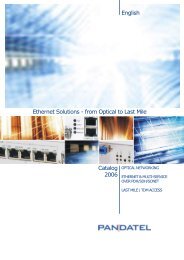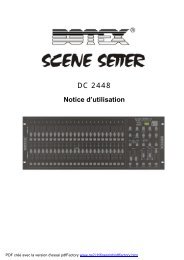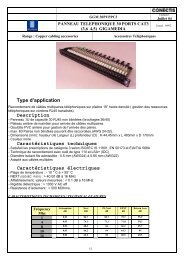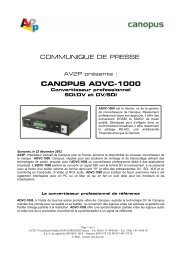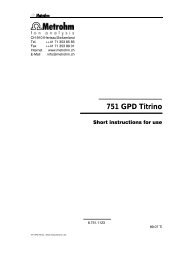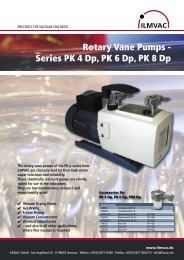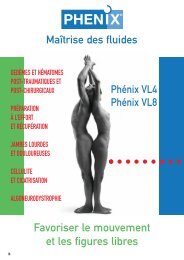Vapor Generation Accessory VGAâ77 Operation manual
Vapor Generation Accessory VGAâ77 Operation manual
Vapor Generation Accessory VGAâ77 Operation manual
Create successful ePaper yourself
Turn your PDF publications into a flip-book with our unique Google optimized e-Paper software.
VGA–774.2.4 Contamination4.2.5 Memory effectsWhen first establishing your analytical method you must alwayscheck for contamination before carrying out your program.Note particularly that traces of potassium iodide (KI) will interfereseverely with determinations for bismuth, mercury, selenium andtellurium. You must always ensure that the VGA-77 system iscompletely free of residual iodide ions (e.g., KI) before attempting todetermine these elements.The most practical way of minimizing contamination problems is toprovide a separate module (including the reagent containers and pumptubes) for these elements. Section 5.3 lists spares and part numbers.Another form of contamination can occur when changing from a highlevel standard to a low level standard. You must make sure that alltubing in the module is thoroughly rinsed.Because the VGA-77 uses a chemical reaction to produce theelemental hydrides, some memory effects can be encountered in thereaction products when changing between low and high levelstandards. Always allow several minutes when moving from a high toa low level standard.You should also ensure that the standards are prepared at the sameconcentration as the samples.Certain types of plastic can cause memory effects for mercury. Keepmercury top standard concentration as low as practicable.4.2.6 Background absorption (AA only)In general, background correction is not necessary for vaporgeneration work. Occasional exceptions may be encountered. Forexample, when determining low level As in the presence of anotherhydride forming element.You should establish whether background absorption is occurringbefore carrying out your analytical program. This can be done byanalyzing a sample with background correction on and then repeatingthe analysis with it off. (Remember to do an instrument zero beforeeach measurement.)If a significant difference is found between the two measurements,then perform your analyses with background correction on. If there isnone, leave the background correction off.4-4 Publication date: May 2004





